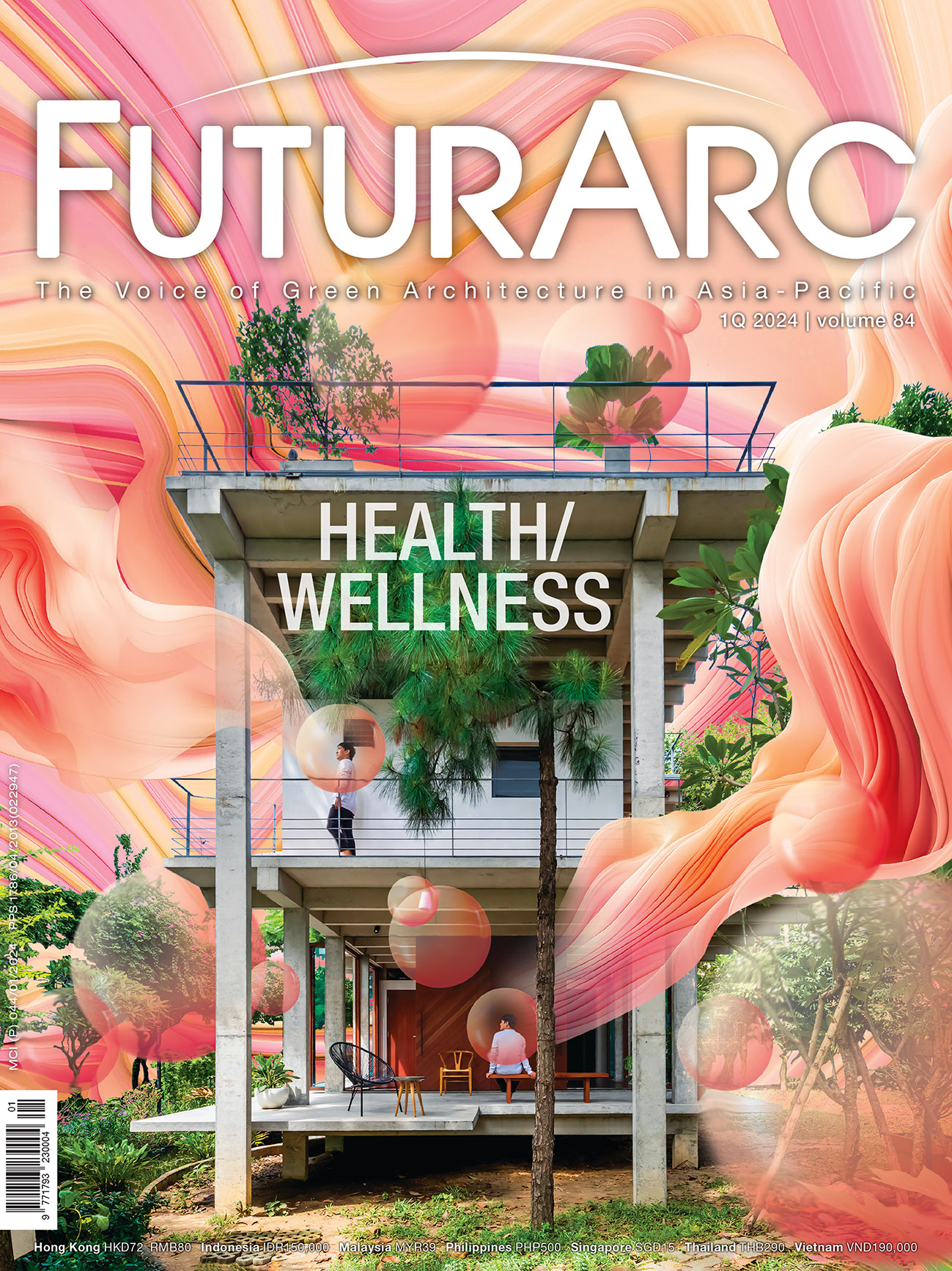Health/Wellness
Dear FuturArc readers,
Let’s talk about this issue’s cover design for a bit.
For this theme, we wanted to express the concept of health/wellness as an intimate reality in one’s everyday life. And what’s more everyday than one’s home?
So, we took the bold Floating House in Thu Duc, Vietnam, as the ‘exemplar’ home, as we were told by the architect: “I believe that living a life surrounded by natural wind, light and greenery, with as few air-conditioners as possible, has a positive effect on one’s mental health.”
The colours pervading every nook and cranny of this cover—symbolising being in the pink of health—were based on Pantone’s colour of the year 2024: Peach Fuzz.1
Architecture and Health/Wellness
Where before, architecture was conceived primarily to shelter and protect humans physically from the elements, today, architecture is tasked with elevating our overall health and well-being, with physical and mental aspects now viewed as a comprehensive whole.
In this modern age, health in architecture intersects typologies and programmes, private and public domains, as well as local and global impacts.
This issue explores how health and wellness of occupants are directly connected to—and the reasons for—the way different projects presented here are conceived, designed and built.
Of particular interest is a sanitary facility by Milinda Pathiraja, PhD, and his partners at Robust Architecture Workshop (RAW)—a meticulously crafted endeavour with implications extending beyond its primary functions. It encapsulates how good architecture means well-being of not only the immediate community/users, but also the local industry and economy.
The symbiotic relationship between health and housing was expounded by Kester Ray de Vera, a construction quality specialist for Habitat for Humanity. He urges us not to forget the crucial role that architects and designers play in improving the health outcomes of homeowners—where something as basic as building materials can drastically affect the mortality rate of occupants, especially among the disadvantaged, low-income and vulnerable populations.
Apart from the building scale, an anecdotal commentary by Hoa Nguyen makes a case for urban agriculture to uplift the quality of health/wellness of city dwellers. She advocates for a more integrative approach to farming in the city—allowing for more green spaces and designing them in a holistic way to enable urban farming activities to flourish for the benefit of Nature and for people’s well-being.
1 https://www.pantone.com/articles/color-of-the-year/what-is-peach-fuzz
Table of Contents
1Q 2024: HEALTH/WELLNESS
Previous issues:
⠀
4Q 2023: YEAR-END ISSUE | WATER
⠀
3Q 2023: GREEN AWARDS | CROSS-GENERATIONAL ARCHITECTURE
⠀
2Q 2023: OLD IS GOLD
⠀
1Q 2023: MOBILITY & TRANSPORT
⠀
4Q 2022: YEAR-END ISSUE | POLICY VS PRACTICALITY, PRACTICE VS PRINCIPLES, PROGRESS VS PLANET
3Q 2022: GREEN AWARDS | REINTERPRETATION
2Q 2022: NEW & RE-EMERGING ARCHITECTURE
1Q 2022: HOUSING ASIA
To read the complete article, get your hardcopy at our online shop/newsstands/major bookstores; subscribe to FuturArc or download the FuturArc App to read the issues!



